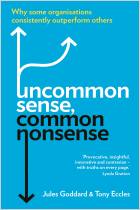
Plan B
How to Hatch a Second Plan That's Always Better Than Your First
ISBN: 9781439198353
Pages: 258
Recommendation
In business, as in war, you can expect the unexpected, but how do you react when it happens? Can your company seamlessly pivot to confront new realities? Can it move from “Plan A” to “Plan B”? If not, you haven’t hardwired your business plan to evolve. But never fear: In this entertaining, easily understandable and highly applicable guide to “adaptive management,” business consultant David Kord Murray tells you how to prepare and execute your plans – or an alternate set of plans, if circumstances demand a switch. Murray uses compelling examples from the real world of business – Sam Walton at Walmart, Steve Jobs at Apple and Mark Zuckerberg at Facebook – to illustrate his points. He draws handy tips from Dwight Eisenhower’s performance on D-Day and General Robert E. Lee’s work for the Confederacy at the Battle of Chancellorsville. To join these legends in the pantheon of great business strategists, follow Murray’s 11 principles and nine processes of adaptive management. getAbstract recommends his book to any entrepreneur or corporate titan looking to achieve the next level of excellence.
Summary
About the Author
David Kord Murray is an engineer, businessman and consultant. He also wrote Borrowing Brilliance.


















Comment on this summary or Начать обсуждение